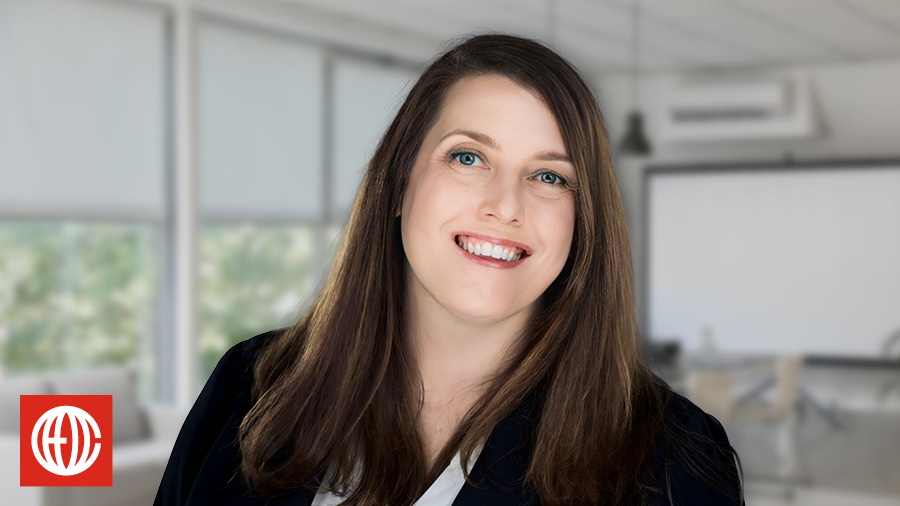Guest: Patrick Eldon, a coach at CEO Coaching International. Patrick is an experienced chief executive and entrepreneur, serving as CEO of orderTalk Inc. from its launch as a SaaS company to its acquisition by Uber in 2018. Under Patrick’s leadership, the company grew from a fledgling startup to a leading provider of digital ordering solutions for the restaurant industry, processing more than $1 billion in annual transactions.
Quick Background: A well-run SaaS business can generate steady recurring revenue at high gross margins with low customer churn and minimal R&D costs. But even in our increasingly digital world, scaling SaaS poses some unique challenges that require both top-notch tech and a personal touch.
On today’s show, Patrick Eldon discusses five keys to scaling a SaaS business, including the strategies and key metrics CEOs should follow all the way to BIG growth.
Keys to Scaling a SaaS Business from Patrick Eldon
1. People
“In the early days, entrepreneurs tend to end up working in the business rather than on the business,” Patrick says. “I was guilty of this as well. I would be doing customer support. I would be doing sales. I see so often CEOs who are caught up in the whirlwind of the day. And what that tells me is that they don’t have the right people surrounding them that they feel confident that they can hand off these tasks to. Either that, or they’re a micromanager. Typically a CEO should be focusing on just a handful of things: vision, cash, hiring the right people, key relationships, and ongoing learning. And that’s why hiring the right people is one of the main focuses of a CEO’s position. My philosophy is to hire people who are smarter than I am. I love the idea of being the dumbest person in the room when it comes to the c-level executives. And I feel that once you’ve got to that point, you’ve really achieved the end goal.”
A growing SaaS business can have a particularly tough time hiring the best people, because ultimately any tech or software company is competing for top talent with the big boys: Google, Facebook, Apple, Amazon. Anyone who is skilled enough to work at that level isn’t going to tolerate micromanaging or unaligned teams that are getting dragged down by underachieving legacy employees.
At the same time, when sorting through world-class resumes, the CEO has to be sure he or she is hiring someone who sees personal achievement as part of achieving BIG company goals. “In terms of hiring processes, we would have people interviewed by different people on the team,” Patrick says. “We’d all have the same kind of questions and we’d all score the candidates accordingly, and then we’d compare notes afterwards. Another thing that is really useful is DISC profiling because you’re going to want different skill sets for different positions. So TTI profiling will give you a general view on how the person shows up and then why they show up that way. You need to know that that person is going to fit within your company culture. And if they don’t, it really should be a non-starter because once you start diluting the company culture, you’re going down a dark path.”
2. Product
Software has an innate ability to adapt and improve. That’s a double-edged sword for a SaaS business. On the one hand, if you have the right team and metrics in place, it can be relatively easy and affordable to react to customer demand and expand your offerings. On the other hand, the temptation to try to be everything for everyone can lead to feature bloat that steers your software and your company away from its core competencies.
Patrick recommends that SaaS businesses embrace “The Hedgehog Concept” from Jim Collins’ book “Good to Great.” Rather than trying to act like the proverbial fox that thinks it knows everything, great companies know one BIG thing, master it, market it, and sell it.
“It’s really important to define product, and this comes into the sales process as well,” Patrick says. “Because if you haven’t defined exactly what your product is, your salespeople go out and sell things that it is not. And that’s where you start to accumulate technical debt. If you go to a potential customer and they say, ‘Can your product do this, that, and the following?’ there is a temptation to say, ‘Yes, we can do that.’ And you can probably get away with it. You can take some coding shortcuts and make that work, but as you start to accumulate those shortcuts that’s your technical debt. As you mature as a company you need to get more disciplined at saying, ‘No, this is what our product does. We can consider those features for a future release.’ But don’t take the shortcuts.”
To avoid those shortcuts and successfully manage upgrades and new releases, Patrick says SaaS businesses should use select customer feedback and in-house analytics to develop an MVP: Minimum Viable Product.
“What we would typically do when we were considering a new release is we developed a council of clients of ours,” he explains, “and we would get them around a table and say, ‘We are developing the next release. What do you guys want to see in the next release? What is top of mind? What do you see as new innovations coming into the industry?’ Typically, best practice is to develop a minimum viable product because you don’t want to spend a year developing a product and then find that actually it’s not what the market wanted or it’s not going to get any consumer uptake. So develop the MVP and then make tweaks to it.”
3. Sales and marketing
“There’s no use having a product if you can’t sell it,” Patrick says. “In SaaS, the one thing that you need to keep a really close eye on is your churn. It doesn’t help to be adding new customers into the funnel if they’re all dropping out the bottom. You should be looking for churn rates of 5% or lower. If churn rates are higher than that, you need to start analyzing why.”
The quality of your product, customer support, and upgrades will go a long way towards keeping customers happy and churn low. At the other end of the funnel, your marketing and sales teams have to be following leading indicators rather than lagging indicators to measure the effectiveness of your processes.
“It’s really important to start setting your goals and then work backwards from those goals,” Patrick says. “If your goal is to add $5 million in new annual occurring revenue, by the time you get to the end of the year, and you haven’t achieved that, it’s too late. That’s a lagging indicator. What are the leading activities that I need to be doing to achieve that lagging indicator? Well, I need $6 million in negotiated contracts to account for a few that might not ultimately close. What do you need to do to achieve that? You might need to do 200 prospect meetings. And how do you do that? Based on my metrics, I know I need to make 4,000 cold calls. And what do you need to do to achieve that? I need five new sales reps by the end of the month. So you now have your root activity that you need to do in order to start building that. You’ve then got measurable metrics, which are leading activities. You can say, 4,000 cold calls, I need sales reps to be doing X number of calls per day. And you create scoreboards and metrics around that so you know that if you are achieving those, then you are going to achieve your ultimate goal at the end of the year. And you’re not going to get to the end of the year and say, Oops, I missed my target again.”
4. Process
Your best practices are what keep your people, product, and sales funnel in sync. In addition to tracking and monitoring leading indicators, our CEO coaches also encourage clients to challenge their company’s core identity and least every two years to make sure that you’re still living your mission and values. We also help clients optimize their planning and communication rhythms, building from daily, weekly, monthly, and quarterly meetings all the way up to BIG annual planning sessions. The more inclusive these processes are, the more buy-in the CEO can expect from executives and managers.
“We tend to recommend no more than three to five key company initiatives,” Patrick says. “And we typically get to that through a process of divergent and then convergent thinking. So you’d encourage the executive team to come up with all the different ideas that they think could move the needle on the leading activities. You’ll end up with a long list. That’s your divergent process. Your convergent process would then be voting on those key initiatives and narrowing it down to your top five, creating owners for each of those projects. And then those owners would go and develop the leading activities, and those would filter down to their team, and so on and so forth. So you’re constantly measuring, keeping track, and ensuring that everything is aligned to achieve these goals that you’ve been setting. And your annual goal should also track to what we call HOTS, Huge, Outrageous Targets, which are typically your three-to-five year targets.”
5. Key relationships
Just as it’s the CEO’s responsibility to get the right people in the right seats inside the company, the CEO also has to manage key external relationships.
“In a SaaS business, that would include customers, vendors, and bankers,” says Patrick. “As CEO, I like to own the key relationships with key account customers, understand what’s coming up for them. Are they in any financial difficulty? Do we need to tweak the offering for them? The same goes for vendors. You don’t want to get to a situation where the vendor goes out of business and suddenly you’re scrambling. So if you have that key relationship with the vendor, you can understand what’s coming down the pipeline, what adjustments you need to make. And then ultimately your banker is totally critical because if there ever is a situation where the economy is in some difficulty, you want to be the one that your banker goes and argues for.”
Your service might be software, but it’s a person — the CEO — who makes a SaaS business work and sets the company apart in a challenging marketplace. Keep the best people focused on the right metrics so that your software keeps improving and your company keeps Making BIG Happen.
Top Takeaways
1. Be the best at one thing and you’ll grow the resources and data you need to do more things better.
2. Top tech talent can work anywhere they want. Have a compelling argument why they should choose you over Silicon Valley giants.
3. Surround yourself with the best people and processes so that you can focus on CEO-level responsibilities.
About CEO Coaching International
CEO Coaching International works with CEOs and their leadership teams to achieve extraordinary results quarter after quarter, year after year. Known globally for its success in coaching growth-focused entrepreneurs to meaningful exits, CEO Coaching International has coached more than 1,000 CEOs and entrepreneurs in more than 60 countries and 45 industries. The coaches at CEO Coaching International are former CEOs, presidents, or executives who have made BIG happen. The firm’s coaches have led double-digit sales and profit growth in businesses ranging in size from startups to over $10 billion, and many are founders that have led their companies through successful eight, nine, and ten-figure exits. Companies working with CEO Coaching International for two years or more have experienced an average revenue CAGR of 31% (2.6X the U.S. average) and an average EBITDA CAGR of 52.3% (more than 5X the U.S. average).
Learn more about executive coaching | Meet our world-class coaches








